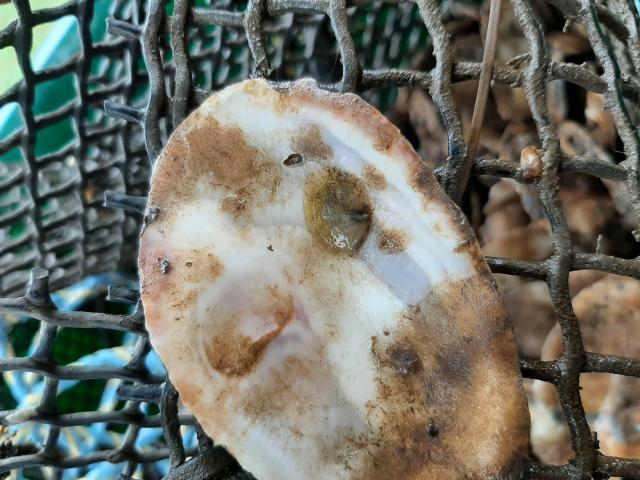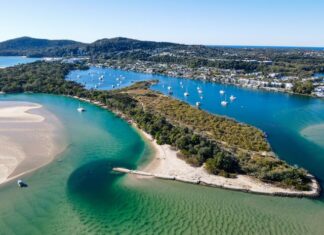A trial exercise for the Noosa River Oyster Gardening Project is showing early signs of success, with juvenile oysters, mussels and other marine species rapidly colonising clean oyster shells deployed in baskets in the Noosa River.
The Noosa Integrated Catchment Association (NICA) is undertaking the field trials to determine if the oyster baskets can contain the oyster shells, remain robust and attract wild oysters and other marine species.
As part of the trial, NICA has deployed 10 oyster baskets into the main channel of the Noosa River estuary, each containing five kilograms of washed, recycled oyster shells. The baskets are suspended into the water column by ropes and wild species can enter them through the large mesh.
This week, NICA invited researchers from the Australian Rivers Institute at Griffith University to inspect the baskets and work with NICA to assess the success of the trial.
Despite the frequent rain and muddy river conditions, the survey team discovered a plethora of juvenile oysters attached to the oyster shells, some up to 15mm in diameter. Several additional species were also observed in the baskets including juvenile mussels, bryozoans, molluscs, polychaetes, ascidians, crustaceans and even fish.
NICA’s project manager Alex Western said it was great news.
“Heavy rain and muddy water can impact on marine life, but rain also encourages oysters to spawn. The oyster shells are attachment points for oyster spat (baby oysters),” he said.
“They also provide homes for a variety of marine life. The trial is going well.”
The success of the trial will lead to a broader Oyster Gardening Project whereby local Noosa residents will adopt and care for baskets of oyster shell over a six to 12 month period.
In this time, wild oysters and other local Noosa marine life will colonise the oyster baskets and grow. The baskets will protect these more vulnerable marine species from predatory fish, giving them a head start in life.
To increase the chances of success of the trial against variable or low recruitment of wild oysters in the gardens, some baskets will contain special seeded shells, local juvenile rock oysters settled on clean oyster shells at the Queensland Government-run Bribie Research Centre.
Once the oysters in the baskets are large enough to resist marine predators, they will be released into the nooks and crannies of the oyster reef foundations that the Noosa Oyster Ecosystem Restoration Project, led by The Nature Conservancy Australia, is laying at key sites in the Noosa River.
“Many households, community organisations and schools have let NICA know that they are really keen to be part of the Oyster Gardening Project.
“It is a wonderful project for local people to get involved in, share skills and knowledge and help kick start the re-colonisation of Noosa’s lost oyster reefs.“ Mr Western said.
For further information or to join the program contact NICA at admin@noosariver.com.au
This project is supported by Noosa Shire Council, the Thomas Foundation, the Australian Government and The Nature Conservancy.








